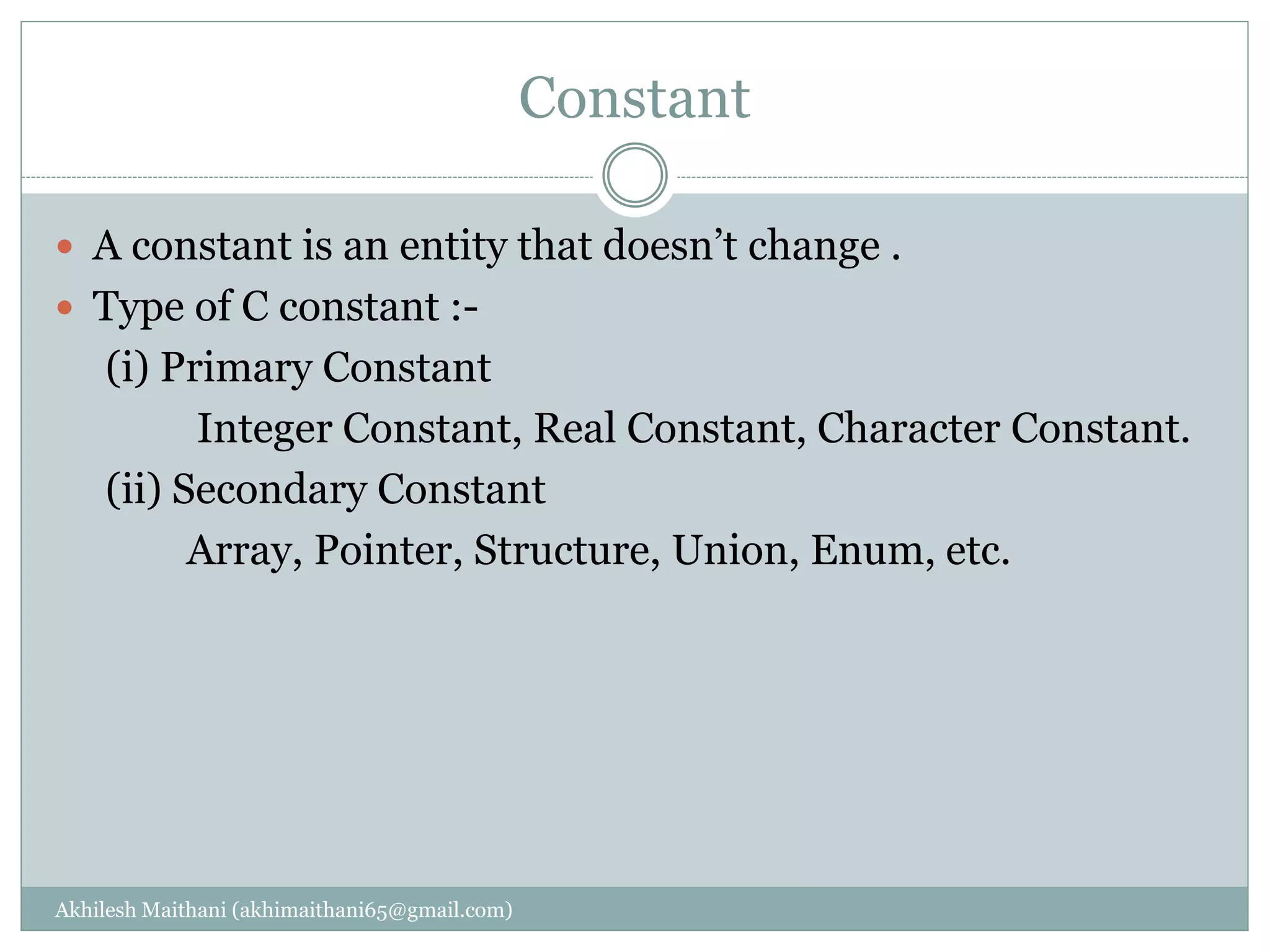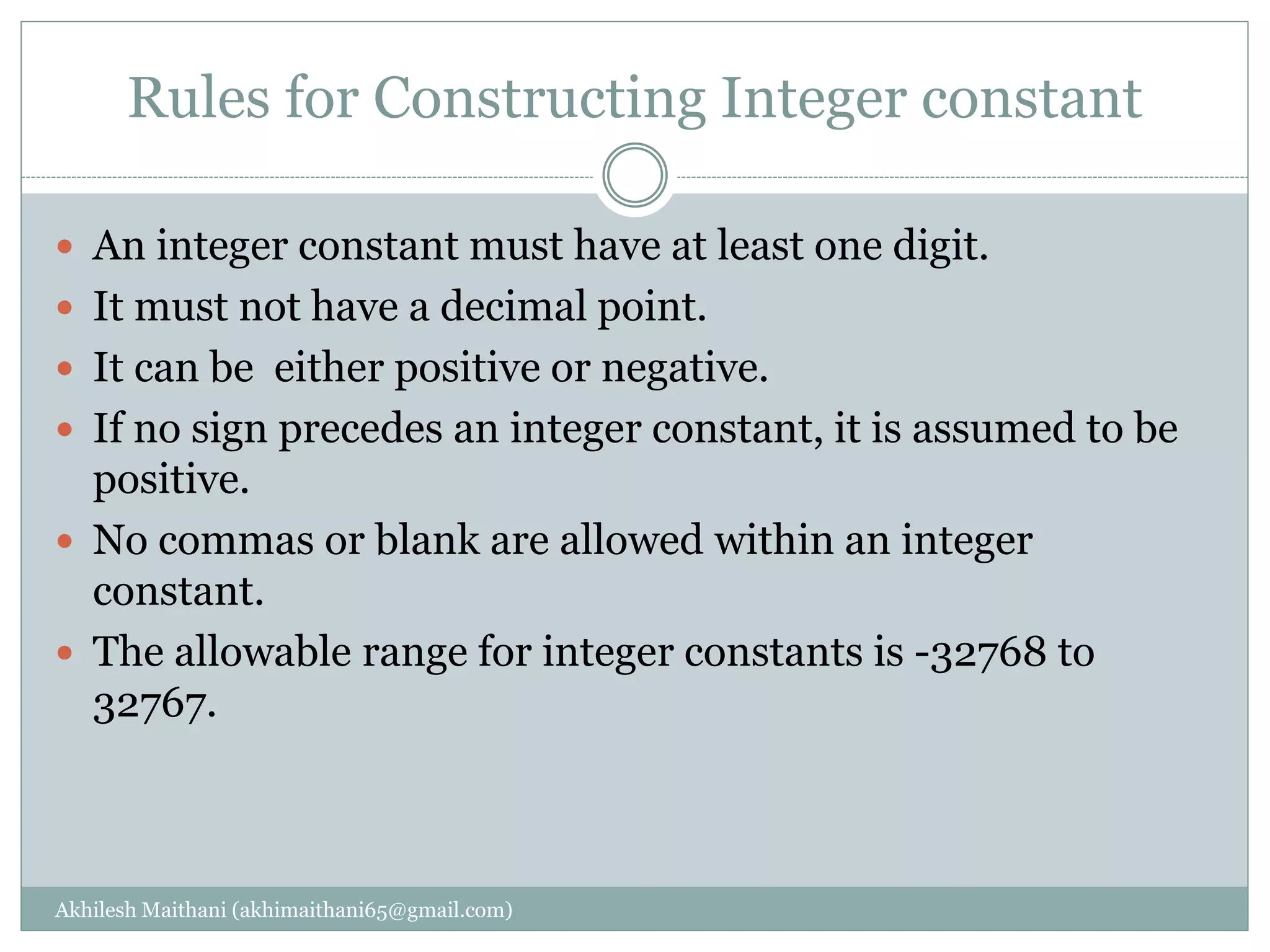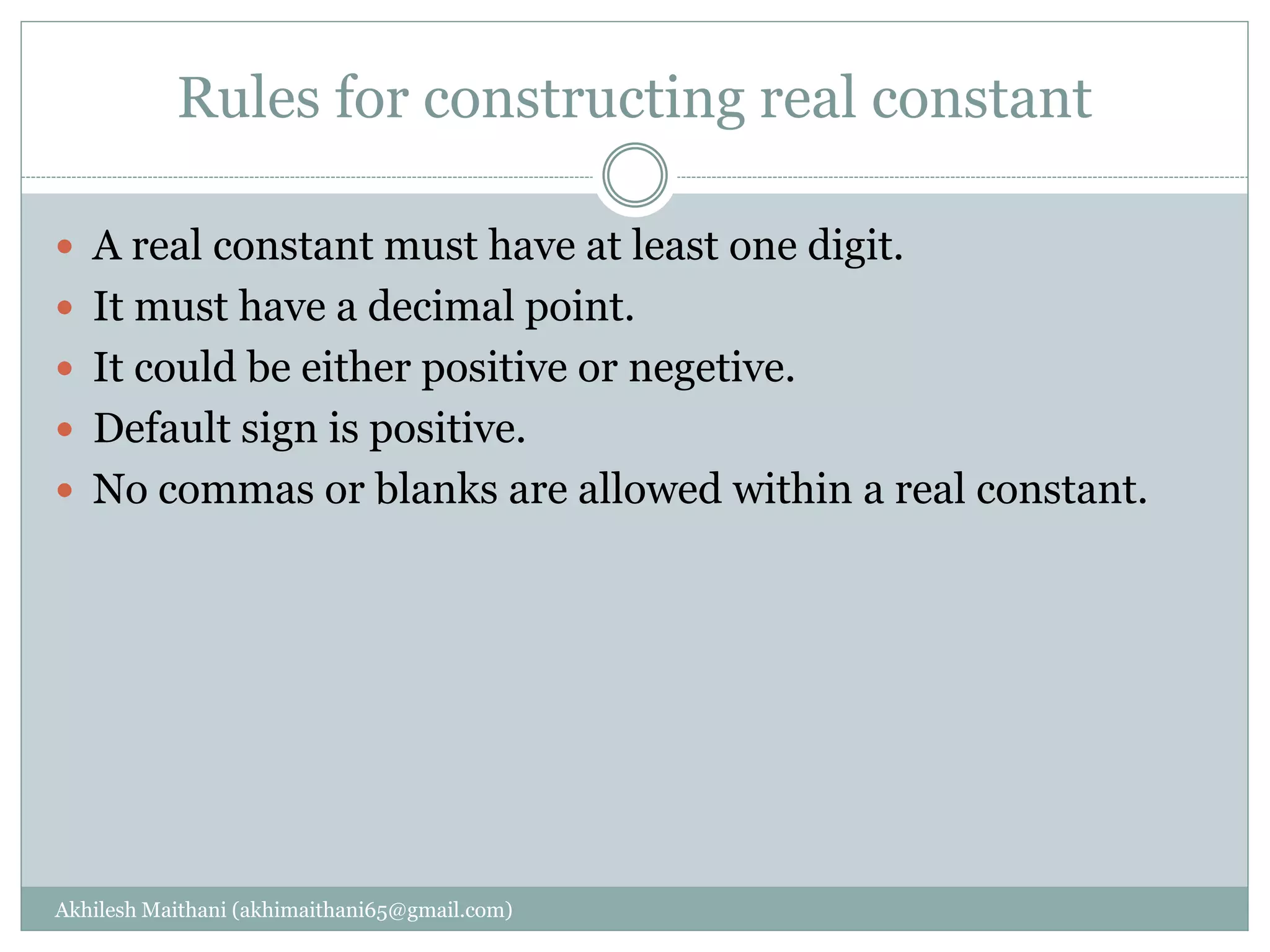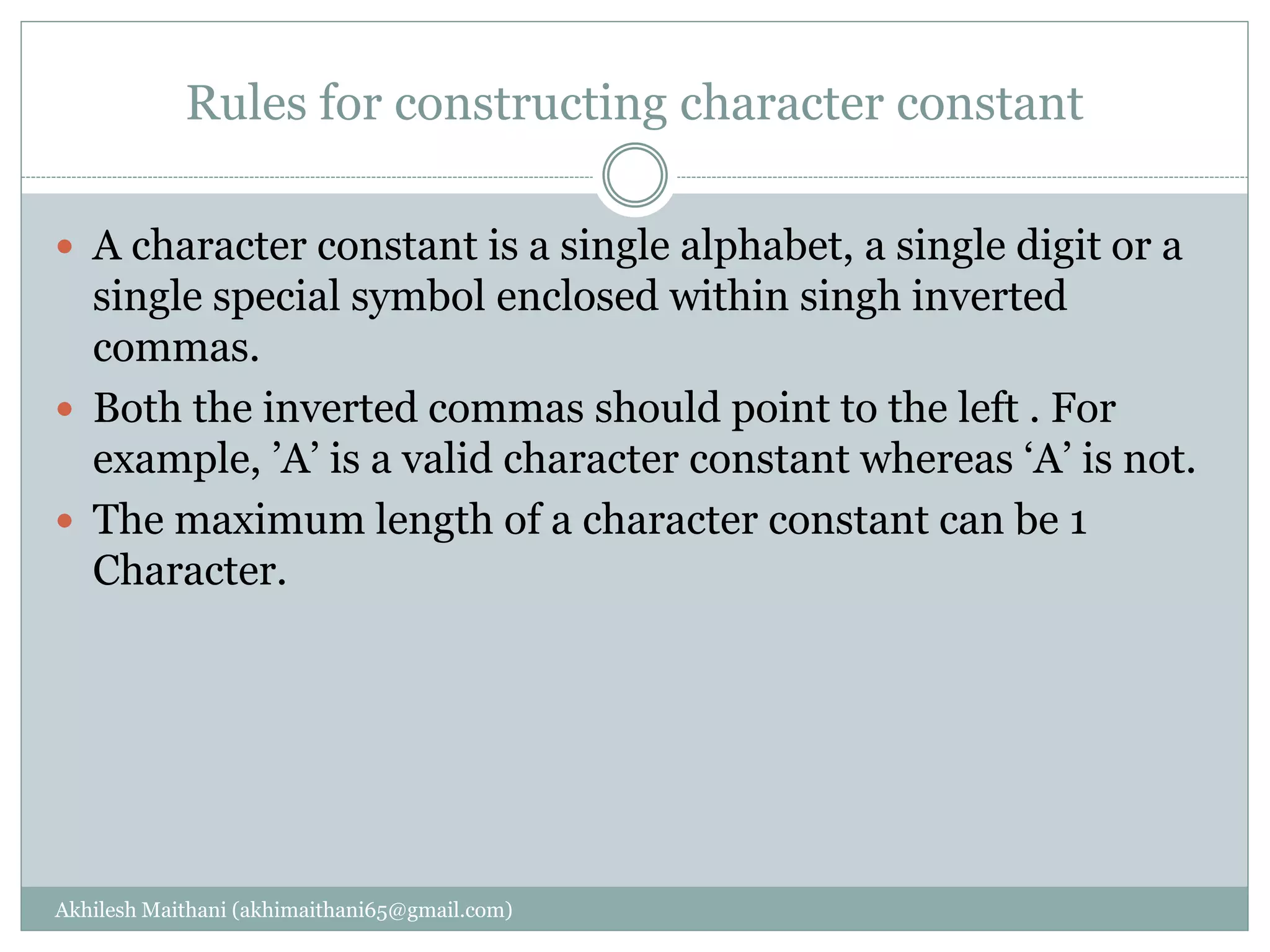The document discusses the C programming language. It defines what a programming language and machine language are. It describes the different types of programming languages including machine language, assembly language, and high-level languages. It discusses how programs in high-level languages need to be translated before execution through assemblers, interpreters, or compilers. It also covers the basic concepts of C like its features, character set, constants, variables, and keywords.
























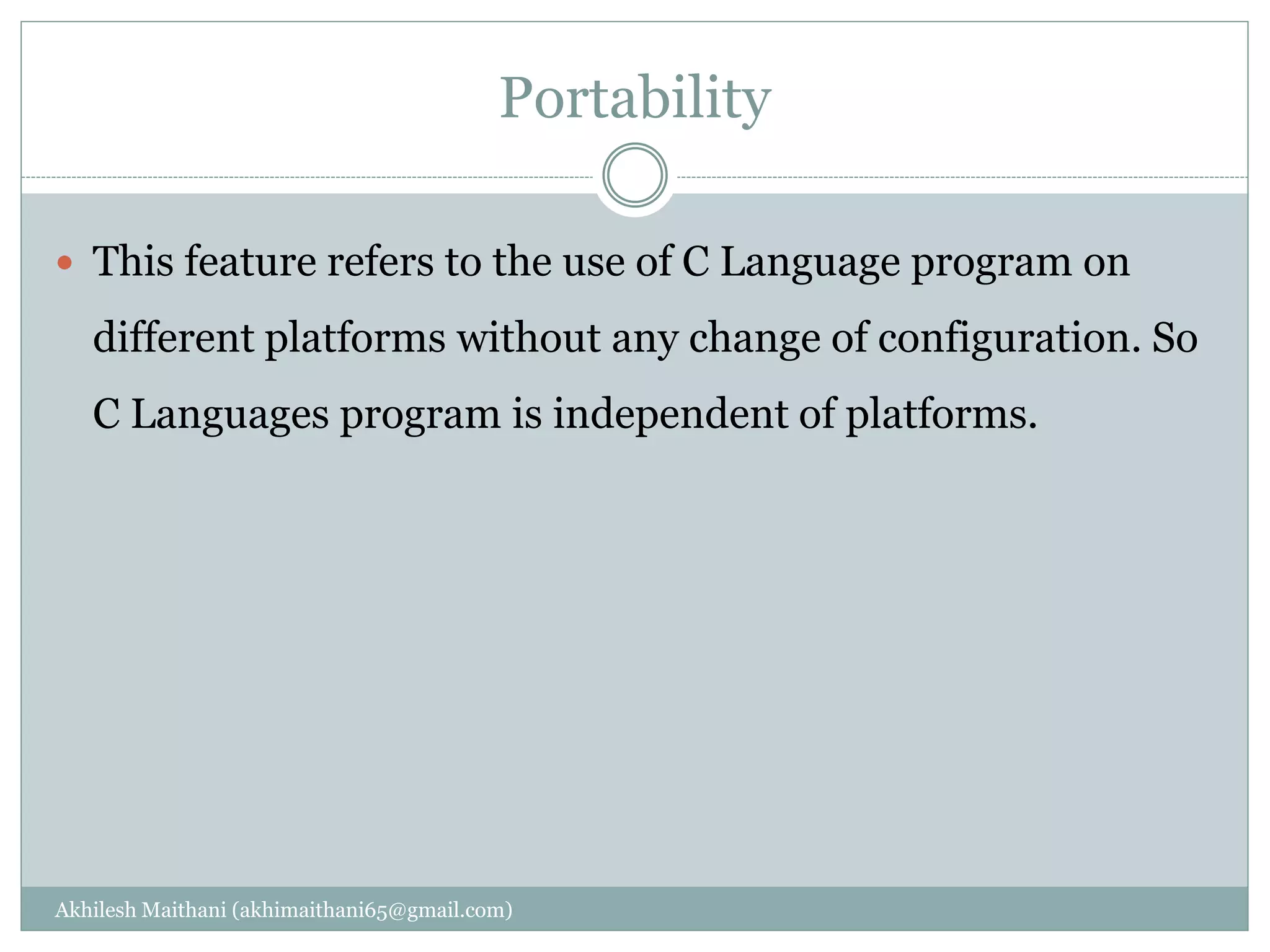






![The C character Set
Akhilesh Maithani (akhimaithani65@gmail.com)
A character denotes any alphabets, digit, or special symbol
used to represent information.
Valid alphabets numbers and special symbols used in C :-
Alphabets – A,B,…………………..,Y,Z
a,b,………,y,z.
Digits – 0,1,2,3,4,5,6,7,8,9
Special Symbols - ~ ‘ ! @ # % ^ & * ( ) _ + = | { }
[ ] : ; “ ‘ < > , . / ?](https://image.slidesharecdn.com/introductionofclanguage-160226105552/75/Introduction-of-c-language-32-2048.jpg)
